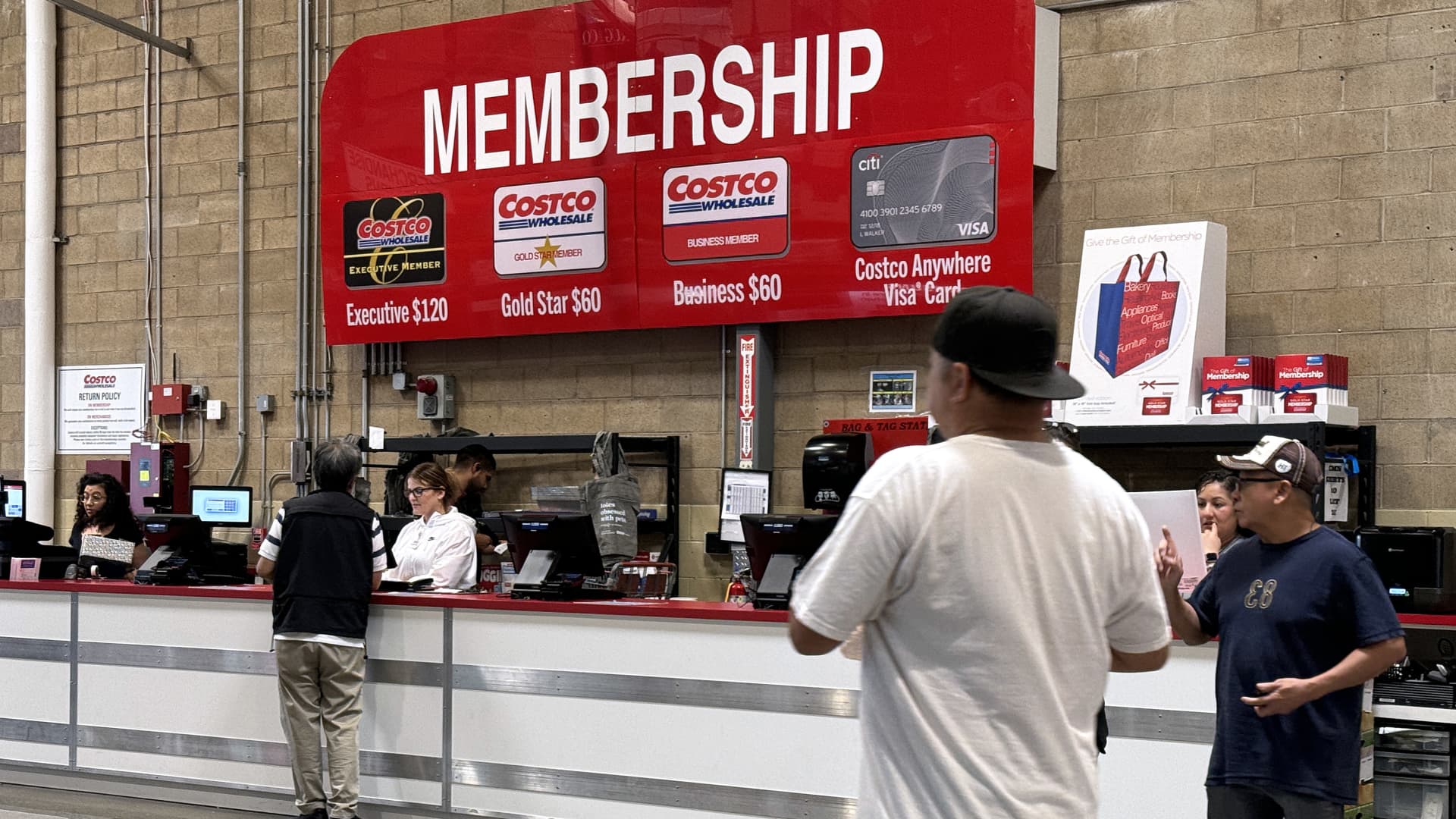As retailers seek to ease sting of harsh U.S. tariffs, analysts think those with loyal shoppers that offer the most bang for their buck will emerge victorious. The SPDR S & P Retail ETF (XRT) — which tracks more than 75 companies in U.S. retail — is down 3.9% this year. The fund has been battered by uncertainty on global trade, inflation worries and wavering consumer confidence. To be sure, the fund has rebounded 15% over the past month as trade fears have eased. But tariff headwinds could see a resurgence, knocking retailers once again. For investors looking for opportunities in the sector, retailers that can offer quality products at modest prices will be attractive. That includes the big-box, one-stop-shop sellers and specialty beauty retailers. “It’s the year of ‘and’ because retail today needs both needs and wants,” TD Cowen analyst Oliver Chen said in an interview. “It’s been very hard if you’re just a want retailer. Another way to say that is you need to blend on both the the food and the discretionary.” He added that another big retail theme of 2025 is “intensification of bifurcation, meaning strength at the high-end and then strength at retail that offers exceptional value and prices.” While most retail stocks are down this year, giants such as Costco and Walmart have bucked the trend and even outperformed the S & P 500. Some beauty companies, particularly those that offer a wide variety of cosmetics products, could see strong gains as U.S.-China trade worries ease and loyal consumers seek out their essentials on a budget. Warehouse clubs and Walmart TD Cowen’s Chen favors warehouse clubs such as Costco and BJ’s that offer a wide variety of items in bulk and at discounted prices. These warehouse clubs are “extremely attractive for value” and should continue to offer strong growth in a good market, he said. “Costco General merchandise is working, anything from jewelry to TV to beauty. Plus they have like rock bottom high value Kirkland food,” Chen said. “And Walmart, for example, I bought an iPad. I bought some Burberry perfume. You can buy used Hermes. But, of course, it’s everyday low price.” BJ’s is particularly attractive to Chen compared to Costco given its runway to scale its store footprint and wider grocery offerings that could support new member growth. Chen named BJ’s the firm’s best retail idea for 2025 and remains favorable on Costco and Walmart for the long-run but said both stocks appear expensive at current valuations. BJ’s trades at 27 times forward earnings, while Costco sports a multiple above 56. Walmart has a forward price-to-earnings ratio of 37.6, per FactSet. Shares of BJ’s are up 32% year to date. Costco has jumped 12% in that time, while Walmart has gained 8.6%. “We believe BJ’s could benefit from increased investor preferences for defensive names and a valuation premium assigned to traffic and membership growth consistency,” Chen wrote in a December note that outlined BJs as one of the firm’s “best ideas” for 2025. JPMorgan analyst Christopher Horvers also flagged BJ’s as an attractive hideout spot amid macroeconomic concerns. He cited a firm analysis on Chase spending data that has shown an acceleration in the wholesale club and discount store channel. He has a $123 price target on BJ’s, which signals upside of 5.6% from Friday’s close. “BJ has increasingly become a safe haven due to its staples-heavy mix and low tariff exposure. The company is benefitting from continued grocery reflation and a hyper-value seeking consumer,” Horvers wrote in a May 9 note to clients. Horvers rated the stock as neutral, however, citing a “stretched” valuation and uncertainty on when the company will reach high single-digit and low double-digit earnings per share growth. Eleven of the 25 analysts covering the stock rate it a hold. Another 14 have a strong buy or buy holding on shares, according to LSEG. ‘Boujee on a budget’ Cosmetics is another area that could power through tariff concerns and appeal to the value-conscious consumer. “The beauty market remains attractive,” Chen told CNBC. “It has some bumps, but beauty has some inherent stability because of the need for replenishment, the loyalty factor, the ‘lipstick factor,’ the innovation factor, the social media factor, where beauty has some resistance because she considers it an essential good in some cases.” “Beauty, we think, can pass through to consumer price increases, plus it has a lower percentage of total and material costs because it has a higher percentage of spending on marketing,” he added. Elf Beauty has established its self as a market player that can quickly develop products similar to those from luxury brands at a much lower cost. “The price gaps are really big, so [the consumer] will trade up and trade down. It’s called customized moderation. Like you will trade up and trade down, but you understand how and when to do that, to be Boujee on a budget,” said Chen, who has a buy rating on shares and calls the company the “czar of beauty.” ELF 1Y mountain Elf stock performance. Elf, to be sure, sources nearly all of its products from third-party manufacturers China, which has contributed to its rocky stock performance this year as investors grew weary of potential tariff impacts. Shares are down more than 36% year to date but have bounced back about 50% over the past month. Analysts still remain bullish on Elf’s stock overall. Twelve out of 17 analysts covering the stock rate it a strong buy or buy, according to LSEG. Piper Sandler reaffirmed its buy rating on Elf in a late April note, saying the stock’s risk-reward appears compelling and the company’s sales trends “remain best in class for beauty right now.”





